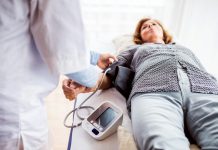
In a new study, researchers found that hot water soak is as effective as exercise for managing the peripheral arterial disease.
Peripheral arterial disease is a common condition affecting blood flow to the arms and legs.
The finding can benefit people who have the condition and find exercise is difficult to do.
The research was conducted by a team from New Zealand.
Previous research has shown that peripheral arterial disease is a condition in which fatty buildup accumulates in the arteries, leading to reduced blood flow to the limbs.
People with the condition may experience muscle pain in the legs while walking.
The primary non-surgical treatment for the disease is supervised exercise.
In the study, the team examined if heat therapy could help control the peripheral arterial disease.
They hypothesized that heat may be more effective than exercise in promoting beneficial cardiovascular changes that, in turn, could increase walking distance in people with PAD.
The team examined two groups of adults with mild-to-moderate peripheral arterial disease.
One group was encouraged to attend twice-weekly exercise sessions. During each session, the volunteers walked for up to 30 minutes on an indoor course and performed up to 60 minutes of circuit exercises.
The other group did spa bathing three to five days a week. They were encouraged to submerge up to their shoulders in a pool of 102-degree water for 20 to 30 minutes.
The researchers found that walking ability and blood pressure in both groups were improved.
There was no difference between the effects observed in heat therapy via spa bathing and a supervised exercise program.
This shows that heat therapy may be a useful option for managing the peripheral arterial disease
Future work needs to confirm the clinical benefits of heat therapy and make sure heat therapy in a safe and efficient way.
The study is published in the American Journal of Physiology—Heart and Circulatory Physiology.
Copyright © 2019 Knowridge Science Report. All rights reserved.



